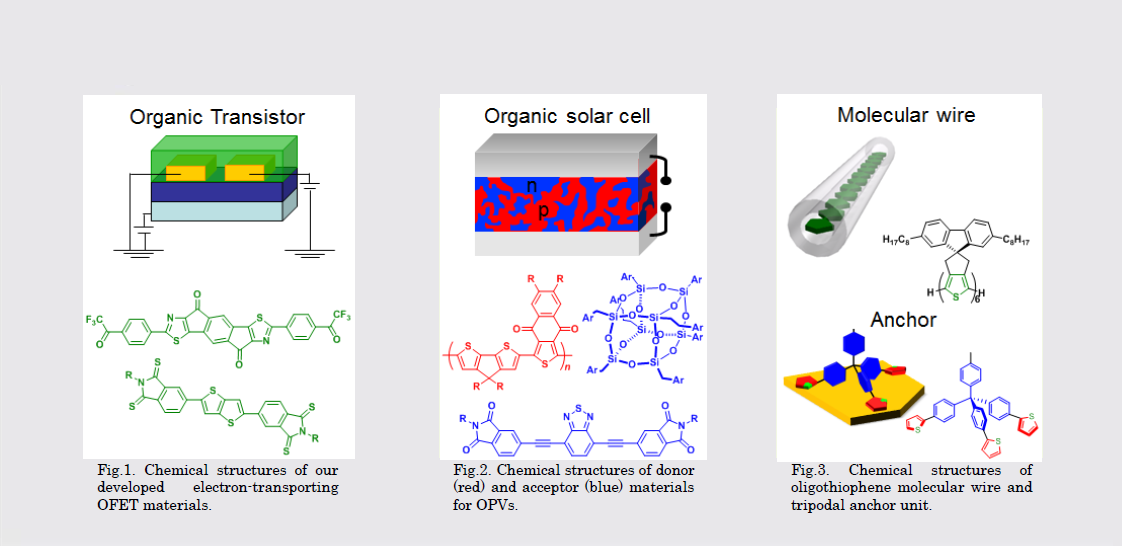
SANKEN
The University of Osaka
大阪大学
産業科学研究所

LAST UPDATE 2017/02/26
-
研究者氏名
Researcher Name家裕隆 Yutaka IE
教授 Professor -
所属
Affiliation大阪大学 産業科学研究所
産業科学ナノテクノロジーセンター ソフトナノマテリアル研究分野
SANKEN, The University of Osaka
Department of Soft Nanomaterials, Nanoscience and Nanotechnology Center -
研究キーワード
Research Keywords機能性π電子系
有機エレクトロニクス
単分子エレクトロニクス
有機半導体
Functionalπ-electron systems
Organic electronics
Single-molecule electronics
Organic semiconductors
- 研究テーマ
Research Subject -
エレクトロニクス応用に向けた新規π電子系の開発
Development of novel π-electron systems for electronic applications
研究の背景 Background of the Research
π共役化合物は特徴的な光物性や電気化学物性を持ちます。これまでに数多くのπ共役系が合成され、その分子構造と基礎物性の相関関係が明らかとなってきています。“π電子の機能”を活かすことを目的とした次の研究段階として、エレクトロニクス材料に応用できる新規π共役系の開発が注目されています。
π-Conjugated compounds have unique electronic, optical, and redox properties. The number of π-conjugated systems created in recent years has increased in a geometric progression, and their structure–property relationships have been unambiguously elucidated. Towards a next research stage for the practical application of “function of π-electron”, development of novel π-conjugated systems for use in advanced electronic materials has become an active area of research.
研究の目標 Research Objective
有機エレクトロニクスや単分子エレクトロニクスの実現に向けた新規π共役系の開発を行うとともに、得られた知見から材料に向けた分子設計指針を確立することを目的に研究を行なっています。具体的には、有機電界効果トランジスタや有機薄膜型太陽電池に向けた半導体材料の開発、および、分子レベルでの電子素子構築に不可欠なユニット開発を行なっています。
The main objective of our research is to develop novel π-conjugated systems for the realization of organic electronics and single-molecule electronics and to establish guidelines for the design of such materials. Our recent subject is development of semiconducting materials for organic field-effect transistors (OFETs) and organic photovoltaics (OPVs) as well as essential components for the construction of molecular-scale electronic devices.
研究図Figures

論文発表 / Publications
Angew. Chem. Int. Ed. 50, 11980 (2011). J. Am. Chem. Soc. 113, 3014 (2011). Chem. Mater. 24, 3285 (2012). Chem. Commun. 49, 8386 (2013). J. Mater. Chem. A 1, 15000 (2013). J. Mater. Chem. C 1, 5373 (2013). Chem. Commun. 50, 4123 (2014). Chem. Mater. 26, 6971 (2014). J. Phys. Chem. Lett. in press (2015).
研究者連絡先 / HP
- yutakaie
 sanken.osaka-u.ac.jps
sanken.osaka-u.ac.jps - http://www.sanken.osaka-u.ac.jp/labs/omm/index.html